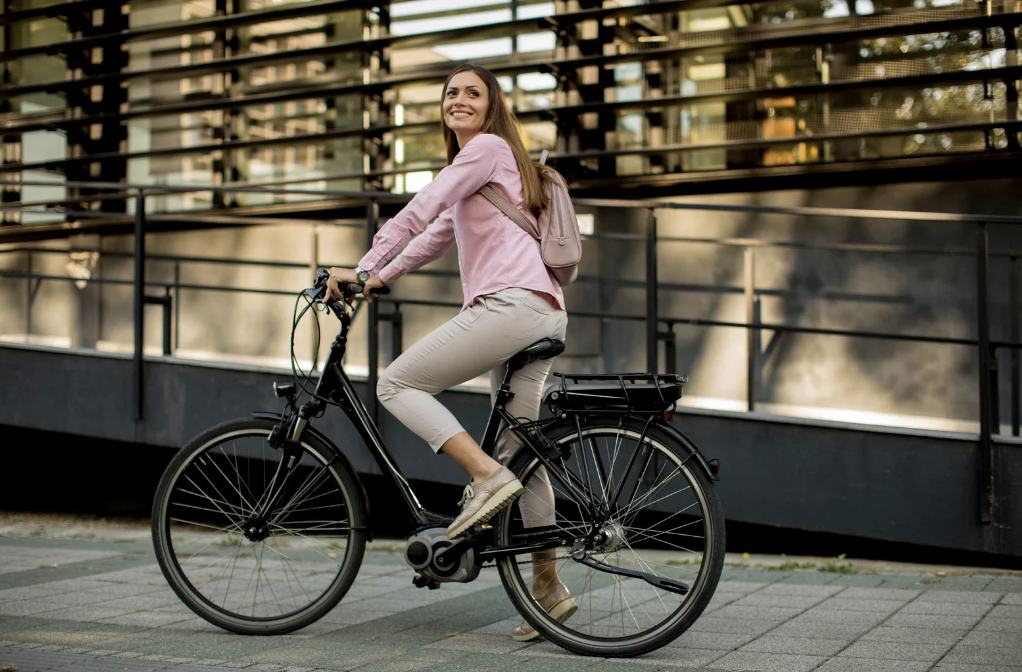LIVING > E-Bikes: The Good, The Bad, and The Ugly
E-Bikes: The Good, The Bad, and The Ugly — And What You Need to Know
They’re everywhere now — gliding past morning traffic, carving up bike paths, even replacing second cars. Electric bikes, once a novelty, have become a real force on Canadian roads and trails. But for every sleek commute or scenic adventure, there’s also a rise in collisions, thefts, and confusion over the rules. So let’s dive into the good, the bad, and the ugly of e-bikes in Canada — and what you should know before buying, leasing, or renting one.
The Good: Freedom on Two Wheels
E-bikes combine the joy of cycling with a serious upgrade in practicality.
Accessibility: Hills, long commutes, and fitness barriers? E-bikes flatten them all. They open up riding to older adults, people recovering from injuries, or anyone who isn’t in Tour de France shape.
Eco-friendly commuting: E-bikes emit significantly less carbon than cars — especially electric cars that still require heavy battery production. If you want a green way to get around without breaking a sweat, an e-bike is it.
Cost savings: No insurance, no gas, minimal maintenance. A decent e-bike starts around $2,000–$3,000, less than six months of car payments for many.
Fun: Let’s not forget — cruising at 32 km/h with pedal-assist feels like flying.
The Bad: Growing Pains
But it's not all smooth rides.
Increased accidents: E-bikes are faster and heavier than regular bikes. Studies show rising crash rates, especially among new riders unfamiliar with the torque or braking differences.
Theft magnet: E-bikes are big targets. A $3,000 e-bike locked outside a cafe is an invitation for thieves unless you invest in serious locks or GPS trackers.
Sticker shock: High-end models easily climb to $7,000–$10,000. And replacing a battery can cost upwards of $800 after a few years.
The Ugly: The Lawless Gray Zone
Here’s where things get messy:
Speed freaks: Some riders illegally modify e-bikes to go 50+ km/h, blurring the line between a bicycle and a moped. This endangers everyone.
Sidewalk riders: In many cities, it’s illegal to ride on sidewalks — but enforcement is patchy at best.
Pedestrian tension: Many trails and paths weren’t designed for powered bikes, leading to conflicts between cyclists, e-bikers, and walkers.
What Ontario Motor Vehicle Laws Apply to E-Bikes?
In Ontario, here’s the legal rundown:
Class: E-bikes are considered power-assisted bicycles under the Highway Traffic Act.
No license or insurance required — if it meets the definition.
Age minimum: You must be at least 16 years old to ride.
Helmet required: For all ages.
Maximum speed: The motor must not assist above 32 km/h.
Power cap: Motor must be 500 watts or less.
Pedals required: If it doesn’t have working pedals, it’s classified differently (moped/scooter rules apply).
Where you can ride:
Allowed: Roads, bike lanes, multi-use paths.
Not allowed: Sidewalks, controlled-access highways (like the 401), certain city parks (check local bylaws).
Important: If you modify your e-bike to remove pedals or boost the motor speed, it's now classified as a motor vehicle. That means insurance, registration, and a motorcycle license would legally be required — even if most people don't bother (and risk massive fines if caught).
Best E-Bike Shops in Canada
If you’re ready to dive into the e-bike world, start with trusted retailers. Some top-rated options:
Cit-E Cycles (Vancouver, BC): Specializing in commuter and cargo e-bikes.
Sweet Pete’s Bike Shop (Toronto, ON): A local legend with a wide e-bike selection and excellent maintenance packages.
Pedego Electric Bikes (nationwide): A reliable franchise option with locations across Canada.
Revelo (Toronto, ON): Innovative Canadian designs — including folding electric bikes.
Most of these stores offer test rides — highly recommended before you buy.
Are There Lease or Rental Options for E-Bikes?
Yes, and it’s a growing market:
Leasing programs: Some shops (like Quantum or Pedego) offer 12–36 month leasing options. It's like financing a car — monthly payments with maintenance included in some cases.
Rentals: Many cities now offer e-bike rentals by the hour or day through companies like:
Roll Scooters (Toronto, Ottawa)
Joyride150 (Markham, ON) — indoor riding options too
Zygg E-bikes (Toronto, ON)
Seasonal tourists can rent for a weekend; commuters can subscribe to a monthly plan. Expect rental rates around $50–$100 per day depending on the model.
Final Thoughts: Choose Your Ride Wisely
E-bikes are a revolution — but like any powerful tool, they come with responsibility. Understand the laws, respect the roads (and trails), and invest in good security. Whether you’re buying, leasing, or just giving it a spin for the summer, Canada’s e-bike scene has never been more exciting — or more ready for smart, conscious riders to lead the way.
🛵 Top 5 Things to Know Before Buying Your First E-Bike
1. Know the Classes:
Not all e-bikes are created equal. Some offer pedal-assist only, others have a throttle. Make sure the one you choose fits Ontario laws (max 32 km/h assist, working pedals, 500W motor or less).
2. Battery Life Matters:
Range varies wildly — some e-bikes can go 40 km, others 120 km on a single charge. Check the real-world range, not just the "lab-tested" numbers.
3. Weight Isn't Just a Number:
Most e-bikes weigh 40–70 pounds. If you’ll be lifting it onto racks, up stairs, or into apartments, test-lift before you buy.
4. Service and Support:
E-bikes need more TLC than regular bikes — batteries, motors, and controllers can fail. Buy from a shop that offers maintenance plans and real parts support.
5. Theft-Proof It:
Invest in a serious lock (or two). Consider GPS tracking or smart locks. A $3,000 bike deserves better protection than a $20 chain.
Related Articles
The Rise of the Food & Travel Vlogger
The Art of Becoming: Sculpting Your Identity
How to Destroy Negative Thoughts
The Ageless Rocker: Keeping the Fires Burning







